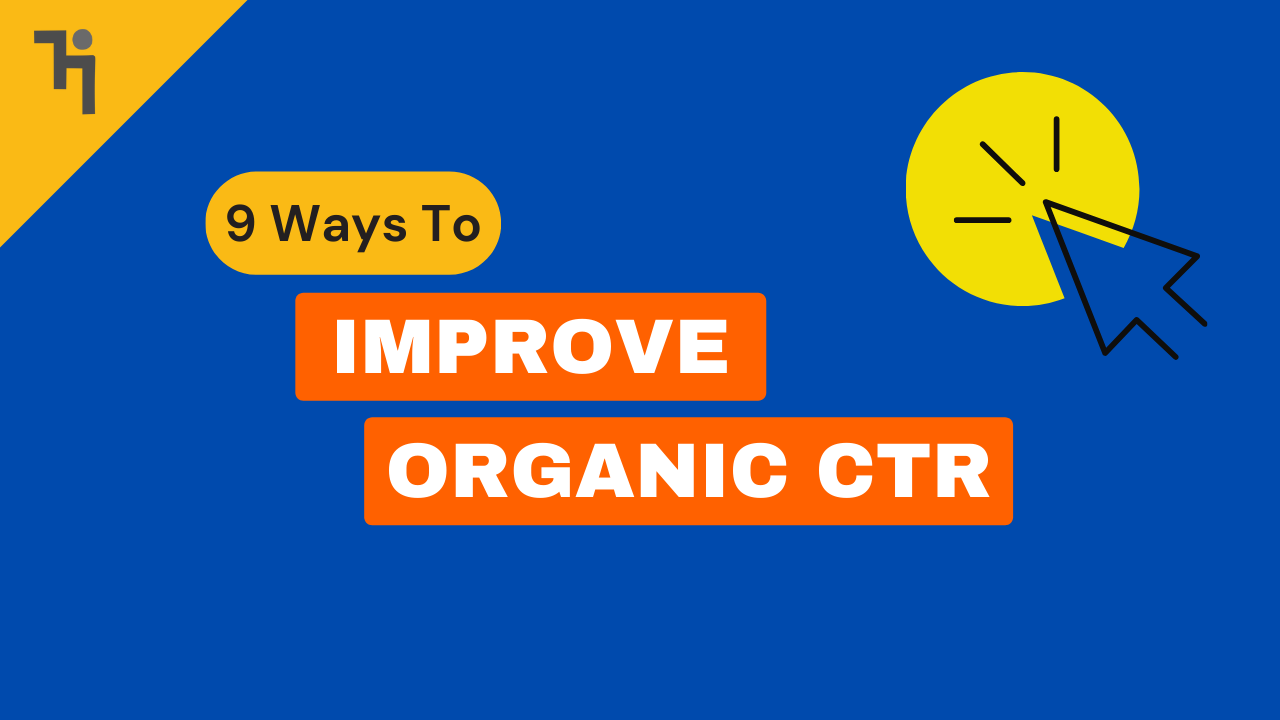Here’s a fact – Having your content ranked on the first page of SERPs isn’t going to bring in any benefit until people aren’t interested in your content. And when people aren’t interested, they won’t read your content.
One of the most efficient strategies to increase the discoverability of your content is to improve organic CTR (Click-through-rate) of your page.
In fact, over the past few years, CTR has become one of the most important factors for search engines to rank content based on relevancy.
This means the more relevant your content seems for a particular keyword, the higher it would be ranked in the SERPs. And the higher it ranks, the higher its CTR.
Click-through-rate or CTR is probably one of the most important parts of SEO that unfortunately, most of us don’t even pay attention to.
What is Organic Click-through-Rate (CTR)?
Organic CTR totals the number of searchers that click on your search result. There are a lot of factors that influence the Organic CTR and arguably, it is one of the most important elements of a high-authority website that receives a lot of organic traffic.
So, let’s say a keyword has about 3000 people that search for it every month.
Your website, which ranks somewhere on position 3 or 4 receives about 300 clicks but has about 3000 impressions.
By the formula,
CTR = Number of Clicks/Number of Impressions,
Which means,
Your Organic CTR = 10%.
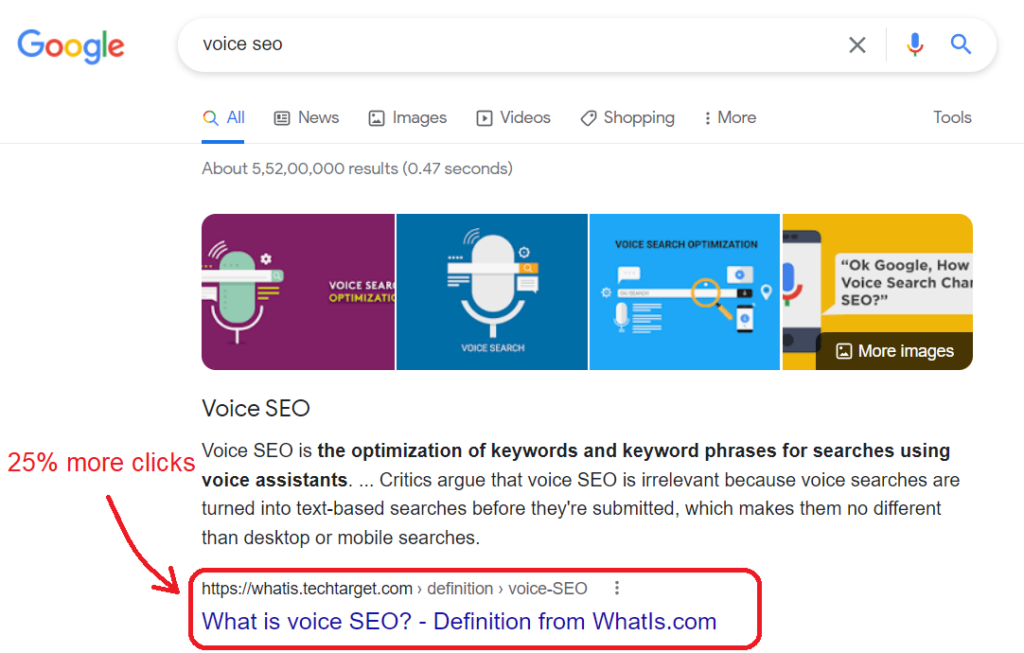
Why is organic CTR important?
It’s a no-brainer that everybody wants that first position in the SERPs because of how many clicks and traffic it would generate for your site.
Click-through-rate is an important concept and impacts how your content is ranked in the SERPs. In fact, the first search result for a keyword bags more than 25% of the traffic for the keyword.
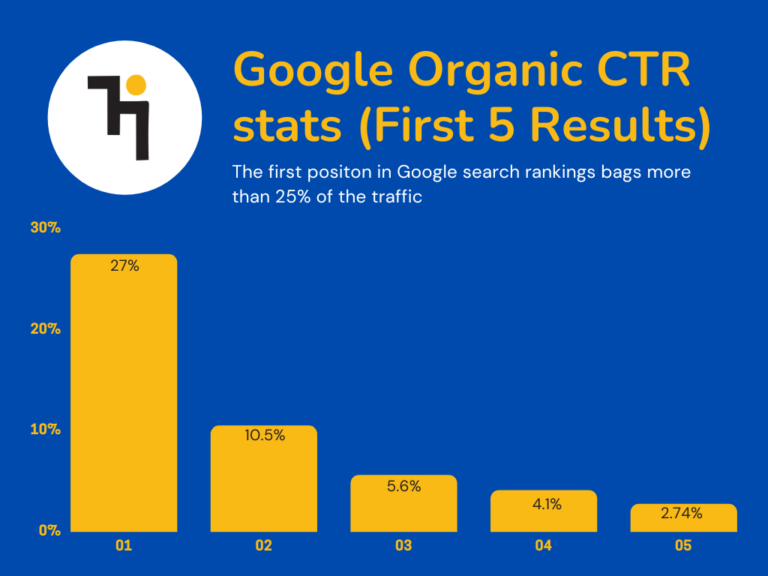
Towards the end results on a SERP, the traffic reduces even further.
And that is why a good CTR is really important for a website.
If you are planning to bag that #1 position in the search results, you need to have a great CTR. Improving your organic CTR makes sure your website is receiving enough traffic, making your content more visible, and increasing the backlink opportunities.
And how exactly do you achieve a great CTR? Let’s talk about that.
How to improve organic CTR?
Improving your organic CTR is no rocket science. It’s all about optimizing the different elements of your content and site to make sure it’s more clickable when people come across it.
With that said, here are some of the best practices to increase your organic CTR.
1. Be picky in choosing your titles
Titles are the most significant elements that contribute to the decision of the searcher if they want to click on your result or not.
Since titles are the only visual appeal to your content, you’d want to craft them carefully.
Optimizing your titles is an important thing if you want users to visit your website. The better it is, the more traffic you are likely to receive.
To improve your titles, you can always:
Use Brackets
Using brackets in your titles is more of a psychological factor.
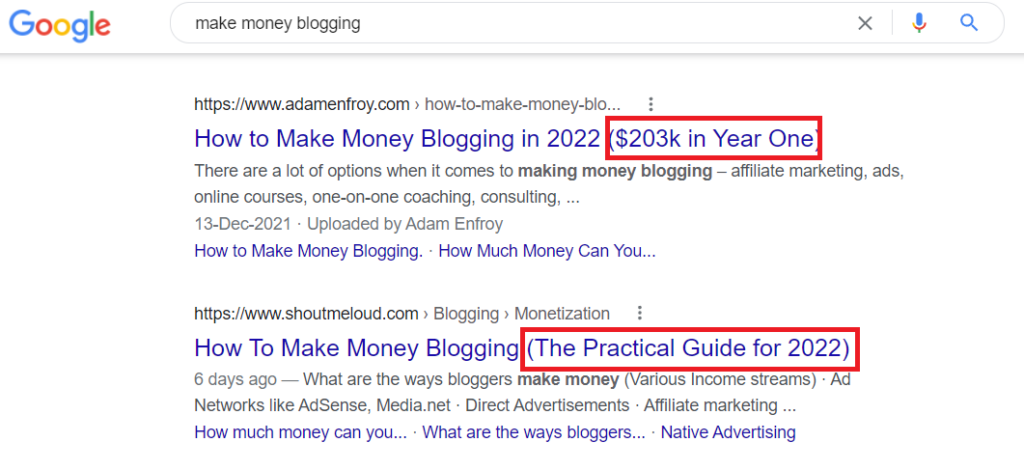
When you add brackets to your titles, it adds the extra punch it needs to attract clicks.
Not only are you using the extra space for putting some additional information in your title, but you are also luring a reader to check out a significant element your content has.
With brackets, you are giving a sneak peek into your content. This means that if you have an important element, like a step by step guide or something like ‘12 actional steps’, you can always add them in your brackets.
Use Numbers
Numbers draw the most attention to your content.
When a user searches for something like, “How to clean my pet’s fur from sofa” and you have a similar article on the topic titled, “7 Quick ways to clean pet fur from your sofa” they are going to want to check it out. The reason is that when you offer them enough options to choose from, they are going to fall for the paradox of choice.
Adding a numbered list to your title makes your content seem digestible and convenient for your reader.
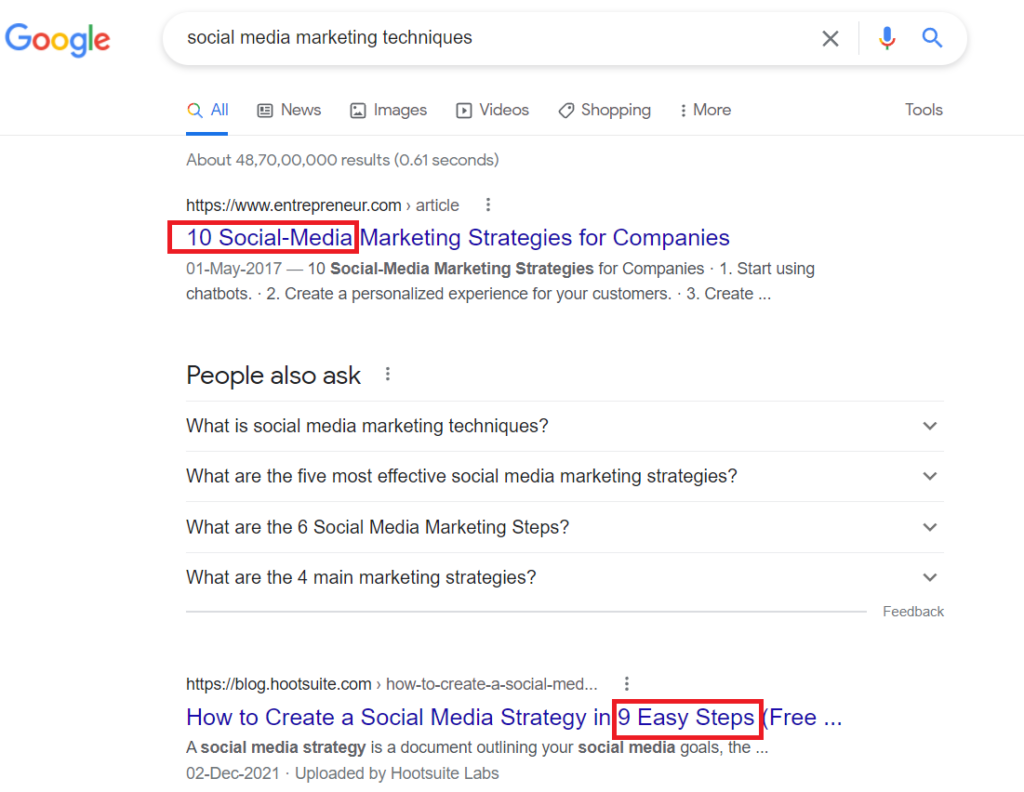
Breaking down your content into a step-by-step guide or a numbered list helps the reader understand exactly what you are offering from the very first glance.
Use Emotionally Connecting Words
We already know the significance of using catchy words throughout our content. The use of catchy words invokes more of the curiousness and intrigue in the viewers.
In fact, most of the times, catchy words reflect an emotional connect with the viewer, thus making them check out your content and spike your CTR.
However, with catchy words, you also have to make sure you are not overdoing it. The best formula to make an emotionally appealing title is:
[Number] + [Your emotionally connecting word] + [Your Title]
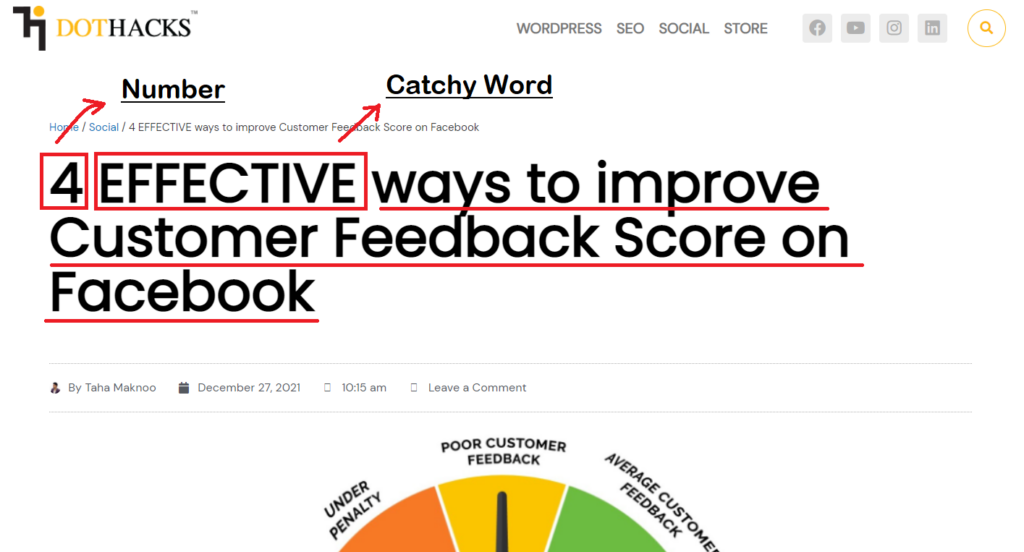
2. Write extraordinary meta descriptions
Meta descriptions are one of the most important CTR factors and if you don’t optimize them, you are losing potential traffic on your website.
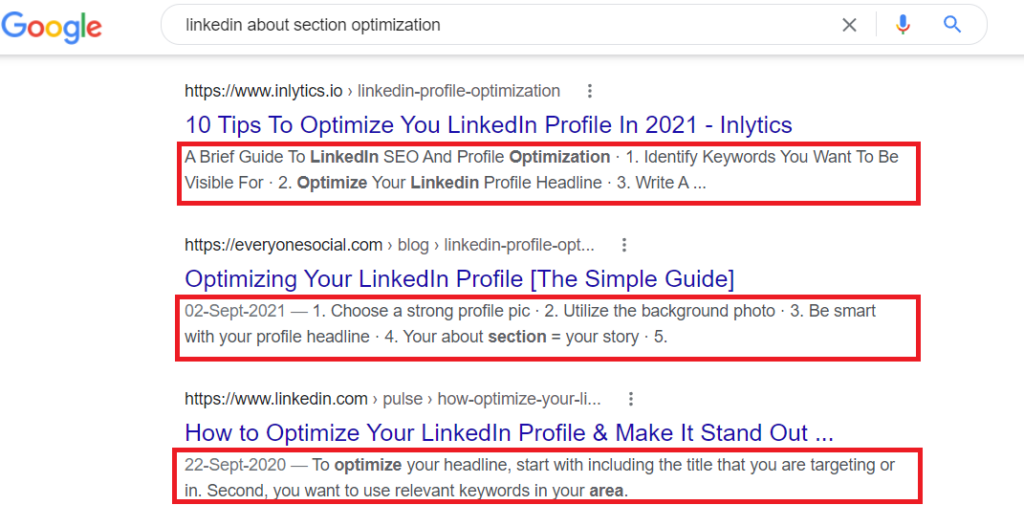
Meta descriptions are actually like a quick preview of the content your website has. When a user searches for a keyword or a query in general, he picks the result that seems to satisfy his search intent the most.
If a user is searching for something and your meta description is able to convince them that your page has the right tips, you win the click for that keyword.
And with time, if you have a better click-through-rate than your competitors, your website is likely to be pushed towards the top of the search results.
Now as far as writing meta descriptions is concerned, you can write them on your own. Almost every blogging platform allows you to write a meta description of your own. And if you skip it, Google generates it for you automatically.
However, it is always advisable that you write your own meta descriptions. If you have a focus keyword, make sure to add it in the description as well.
3. Don’t use Clickbait titles
Titles that speak one story and the content that speaks a totally different story contribute to clickbait titles.
So, if your question is, ‘Does a clickbait title help me gain a good CTR?’
The answer will be ‘YES’.
But does it benefit your brand?
Absolutely not.
Clickbait titles do surge your website to the top of the search results for time being. However, when a user clicks on your result and notices that your content doesn’t actually have anything of value that would fulfill his search intent, they are going to click away.
So, how does it affect your website?
If a user clicks away from a result after opening it quickly, it increases your bounce rate and decreases the average time on time.
Both these factors most of the time are considered fairly important for a website to rank in the top results for a keyword.
A common method to ensure you are satisfying the search intent of your viewers is to ‘underpromise and overdeliver’.
This means that your title shouldn’t always reveal everything that your content contains. If you are writing a blog post on ‘11 new strategies to use micro-conversions to your benefit’, you might always want to add a few bonus tips at the end or provide some extra insights about the topic that the user didn’t know about judging by the title and the meta description of your site.
4. Brand your content
If you may have realized, a lot of websites in the search results brand their content. This is usually in the following format:
[TITLE] – [NAME OF THE WEBSITE]
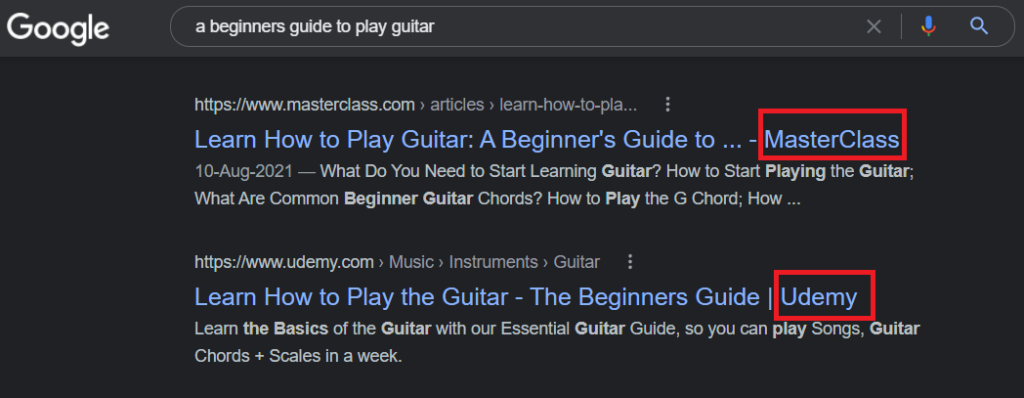
Content branding isn’t something that Google favors or opposes. If you want it, keep it.
Content branding works like a charm most of the times, so it’s recommended to work on it. When your website features informative content that a user has found helpful before, they would usually remember your brand and choose it over the rest of the results.
Before you brand your content, always remember that you should prefer keeping the branding towards the end.
You can use Yoast SEO to manage your content branding.
Go to your WordPress dashboard, click on Yoast > Search Appearance and set the title and Sitename.
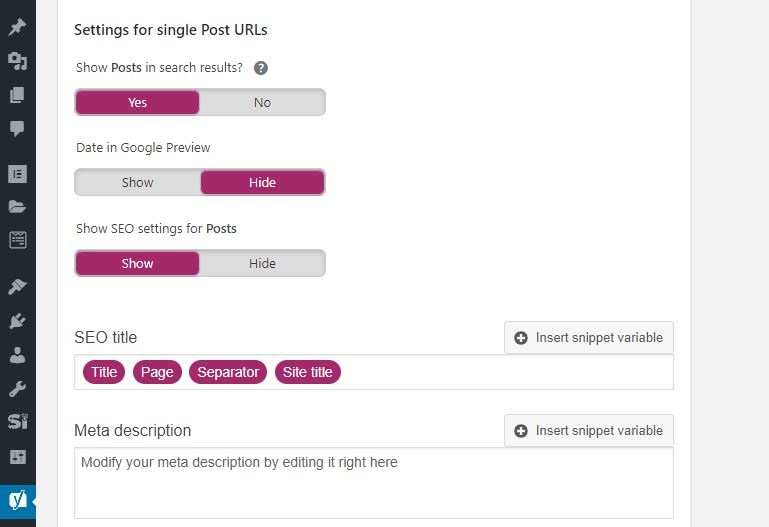
5. Don’t restrict your website to a single device
When you are planning to get your business out there, don’t rely only on desktop users or mobile users. Rather, make your website available and responsive for all kinds of devices.
If your website is desktop only or mobile-only, you are losing about half the traffic.
Since 51% of internet users use their smartphones to access the internet, it makes a lot of sense to optimize your website for all devices.
Over the past few years, Google has been aiming to optimize the content from the websites they are pushing easier to access on all platforms. Since their goal is to retain as many users as possible, it only makes sense if the websites it features are responsive to every device a user is on, including a tablet.
Now if your post in the search result isn’t focusing on making itself available on every platform, there is a good chance that the post would struggle to perform well in the SERPs.
6. Include descriptive URLs
Making your URLs descriptive has a huge impact on the SEO of your website.
Descriptive URLs have a strong impact on how your content is pursued by the viewers. Keeping it shorter and including your focus keyword not only is easy on the eye but also allows the search engines to recognize the intent of your post as well.
When you write a blog post, make sure you are categorizing it into a respective category it belongs to. This makes your content just not easy to find but even gives a proper structure to your content in the search results.
Having descriptive URLs also increases search engine visibility.
If you have a huge website with a bunch of products, you can use descriptive URLs to promote single products to your customers without much of a hassle.
For WordPress users, you can customize your URLs in your dashboard > Settings > Permalinks.
7. Update your content regularly
If you are making a guide or a step-by-step tutorial based on the current year (something like 9 Social media marketing trends you can’t overlook in 2022), it’s obvious that the next year, the same content would seem irrelevant to Google as well as to a user.
When a user searches for a particular keyword, the latest content is promoted by the search engines. If your title is ‘9 Social media marketing trends you can’t overlook in 2021’ and the user is searching for the same topic in 2022, they are most likely not going to click on it since they want fresh and updated tips that your content isn’t promising at the moment.
So, what can you do?
Re-publishing and auditing your content are the two most common and effective strategies to make your content seem fresh.
Just updating the dates is not something that is going to help you. You might want to update the content as well.
You can update the current date and year of your publishing and even add a couple of points to the content to make it look more informative and updated as well.
8. Optimize the speed of your website
As Aleks Shklyar mentions in his report, Google doesn’t count speed as a page ranking factor.
But they do consider Page Experience more than anything, especially since Google has been trying to focus on user experience the most.
If your website takes time to load, people might click your result but as it takes time to load, they are going to click away, hurting your organic CTR.
If a user has to wait for more than 3 seconds for your site to load up properly, they are more likely going to settle for an alternative result than to wait for your page to load up.
And if people leave in the first 3 seconds, your bounce rate could spike up by about 32% just because your website didn’t load up faster.
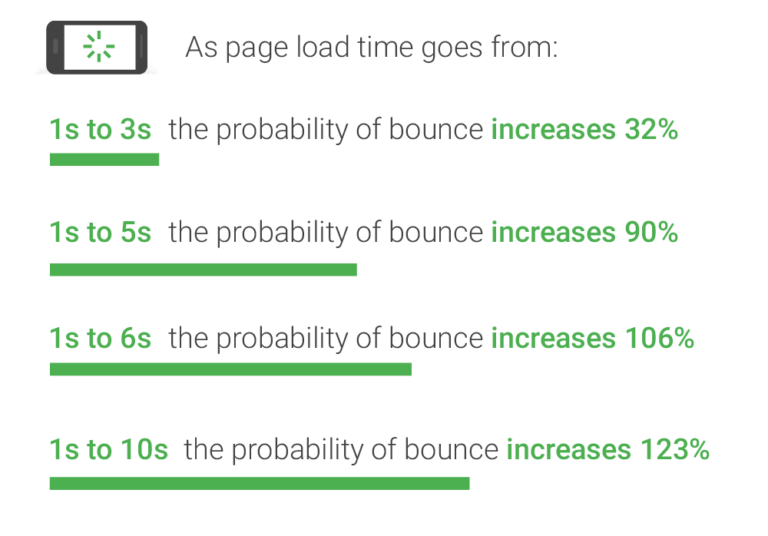
This makes improving the speed of your website important since it’s an important factor for a good organic CTR.
Overall, if you want your website to be among the top search results, improve its speed.
9. Structure your content for featured snippets
Featured snippets appear at the very top of a search results page.
Basically the content that ranks at position zero is your featured snippet.
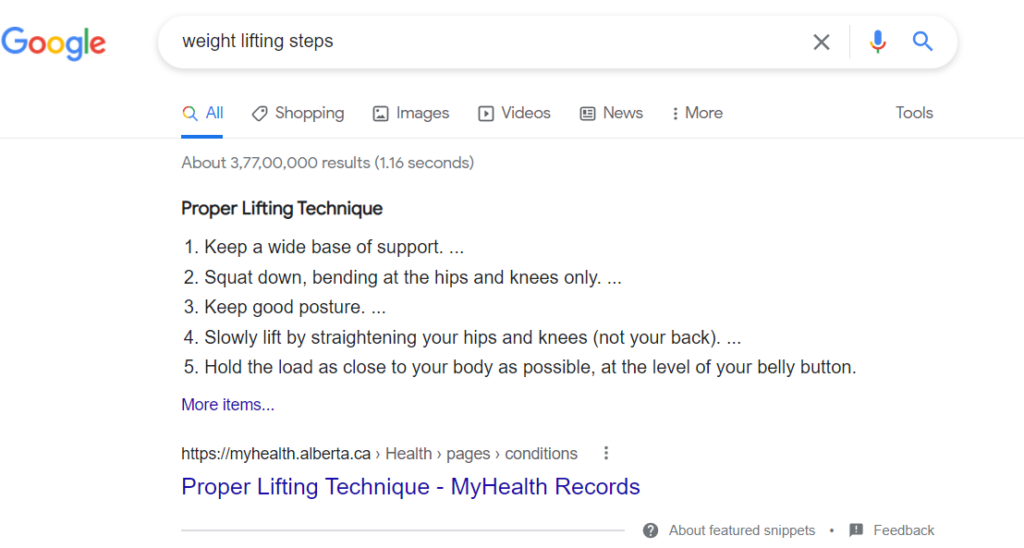
Featured snippets are automatically chosen by Google after considering a variety of factors.
Getting this position in the search results is seriously beneficial to your organic CTR.
If you are already ranking on the first page for a particular keyword, you can always optimize your content to make it reach this position. To do this, you can include numbered lists in your content and try to summarize the answer to the search query in a single paragraph, and try to keep it towards the start of your post only.
You can always optimize the title, the URL, and the meta description of your content as well, and try to bring it as close to the focus keyword as possible.
🔥 Bonus Tip #1 – Keep your title under 60 characters. The reason for this is if your title is more than 60 characters, chances are that it won’t fit into the titles displayed in the search results.
And as viewers can’t see titles properly in the search results, they might end up not clicking on your result at all.
🔥 Bonus Tip #2 – Use some emotional words in the title from time to time. Sound like your website has exclusive value with your titles.
Words like Quick, Easy, Effective, Guide, Amazing, proved, etc. are the most commonly used words to help increase your CTR. Don’t go overboard though, be subtle with them.
Conclusion
Optimizing the organic CTR in your website means inviting more visitors, conversions, and sales on your website. Who wouldn’t want that?
One thing that’s sure is that a good CTR is one of the pillars of a well-performing website.
Pay attention to your organic CTR if your main source of traffic is from Google and other search engines.

